
E&G Quaternary Science Journal
Scope & Guideline
Illuminating the Quaternary Period’s Mysteries
Introduction
Aims and Scopes
- Paleoclimate and Environmental Reconstruction:
The journal focuses on reconstructing past climates and environments using various proxies, including isotopic analyses, sedimentology, and biomarker studies, to understand historical climate dynamics and their implications. - Geoarchaeology and Archaeological Landscapes:
Research often emphasizes the interplay between geological processes and archaeological findings, providing insights into past human activities and settlement patterns, particularly in areas like the Nile Delta and Central Europe. - Sedimentology and Stratigraphy:
A significant portion of the journal's articles investigates sedimentary processes, stratigraphic sequences, and landform evolution, contributing to the understanding of Quaternary deposits and their implications for landscape development. - Glacial and Periglacial Processes:
The journal includes research on glacial dynamics, subglacial processes, and periglacial environments, which are critical for understanding past ice ages and their effects on contemporary landscapes. - Soil and Pedological Studies:
Studies on soil formation, development, and loess deposits are prevalent, providing valuable information on land use history and environmental changes over time. - Interdisciplinary Methodologies:
The journal encourages the use of innovative methodologies, including GIS, machine learning, and multi-proxy approaches, to enhance the analysis of geological and archaeological data.
Trending and Emerging
- Climate Change and Its Historical Context:
An increasing number of studies are focusing on the implications of past climate fluctuations for understanding contemporary climate change, emphasizing the relevance of paleoclimate data in current environmental discussions. - Technological Advancements in Research Methodologies:
There is a noticeable rise in the application of advanced technologies such as machine learning and remote sensing in Quaternary research, showcasing the journal's embrace of innovative approaches to data analysis and interpretation. - Geoarchaeology and Environmental Interactions:
Research integrating geoarchaeological perspectives is gaining momentum, particularly in understanding how ancient human societies interacted with their environments, which is becoming increasingly relevant in discussions of sustainability and land use. - Sediment Dynamics and Landform Evolution:
Publications are increasingly focusing on the dynamics of sediment transport and landform changes, reflecting a growing interest in understanding geomorphological processes in the context of both natural and anthropogenic impacts. - Multi-Proxy Environmental Reconstruction:
The trend toward using multi-proxy approaches for environmental reconstruction is expanding, as researchers aim to create comprehensive records of past environments that can inform on future ecological changes.
Declining or Waning
- Tribute Papers and Historical Contextualization:
While tribute articles honoring past researchers have been a significant aspect of the journal, their frequency appears to be decreasing as newer research takes precedence, reflecting a shift towards contemporary issues and methodologies. - Traditional Stratigraphic Studies:
Although stratigraphic studies remain important, there seems to be a waning emphasis on purely traditional stratigraphy without integration of modern techniques or interdisciplinary approaches, which may lead to a decline in standalone stratigraphic papers. - Niche Archaeological Studies:
Specific niche studies focusing on localized archaeological findings without broader implications may be declining as the journal shifts towards more integrative research themes that connect archaeology with broader geological and environmental contexts.
Similar Journals
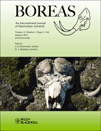
BOREAS
Connecting Disciplines for a Sustainable FutureBOREAS is a prestigious academic journal published by WILEY, dedicated to advancing knowledge across the fields of Archaeology, Ecology, Evolution, Behavior, Systematics, and Geology. With a commendable track record since its inception in 1972, BOREAS has consistently contributed to the scholarly landscape, currently holding a distinguished position in Q1 across multiple categories, including a ranking of #8 in Archaeology and a solid percentile rank in Ecology and Geology. This high-impact journal fosters the dissemination of groundbreaking research, further establishing itself as a vital resource for researchers, professionals, and students alike. While access options are limited to subscription-based, the quality and significance of research published in BOREAS make it an essential addition to any academic library, ensuring that studies conducted in these pivotal fields reach a global audience. With a commitment to excellence and innovation, BOREAS continues to drive forward the frontiers of knowledge and understanding in Earth and planetary sciences.
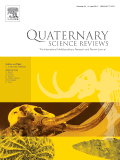
Quaternary Science Reviews
Connecting Disciplines Through Quaternary InsightsQuaternary Science Reviews is a premier international journal published by PERGAMON-ELSEVIER SCIENCE LTD, dedicated to the multidisciplinary study of the Quaternary period and its implications across a variety of scientific fields, including archaeology, geology, ecology, and environmental science. With an impressive impact factor that places it in the Q1 quartile across multiple categories such as Archaeology, Ecology, and Geology, it stands as a beacon of scholarly excellence. The journal, which has been in circulation since 1982 and converges its knowledge through to 2024, is instrumental for researchers and professionals seeking to explore the complexities of climate change, biodiversity, and earth systems. Though it does not currently offer Open Access options, its well-curated content remains vital for academic advancement and is accessible to a broad audience through institutional subscriptions. Positioned at the forefront of modern scientific inquiry, the journal fosters an environment for sharing pivotal findings and fostering intellectual discussions, making it an indispensable resource for students, practitioners, and researchers alike.

Cuaternario y Geomorfologia
Unveiling the Secrets of Geomorphological EvolutionCuaternario y Geomorfologia is a distinguished journal published by the Spanish Quaternary Research Association, focusing on the interdisciplinary study of Quaternary research, geomorphology, and related fields. With its ISSN 0214-1744 and a publication history spanning from 2012 to 2024, the journal serves as a critical platform for researchers and practitioners in geography, geology, and paleontology. Although its current Scopus rankings place it in the lower quartiles across various categories, being Q4 in Earth-Surface Processes, Geography, Planning and Development, Geology, and Paleontology, Cuaternario y Geomorfologia continues to push boundaries within its sphere, aiming to foster a deeper understanding of Earth sciences. Situated in Madrid, Spain, the journal's commitment to sharing groundbreaking research without access barriers enhances its value for academics, offering insights that drive forward the fields of Quaternary studies and beyond. Researchers, professionals, and students alike will find a rich repository of knowledge within its pages, making it an essential resource for current and aspiring experts in the discipline.

Geografia Fisica e Dinamica Quaternaria
Unraveling the Secrets of Climate Change and Glacial EvolutionGeografia Fisica e Dinamica Quaternaria is a leading Italian journal dedicated to the exploration and understanding of Earth-surface processes through the lens of Quaternary geology. Published by the COMITATO GLACIOLOGICO ITALIANO, this journal has been a key player in the dissemination of pivotal research since 1978, significantly contributing to the field of Earth and Planetary Sciences. With an ISSN of 0391-9838 and E-ISSN 1724-4781, it serves as an essential platform for scholars and practitioners, offering insights into the dynamics of climate change, glacial processes, and landscape evolution. Although categorized in the Q3 quartile for Earth-surface processes in 2023, the journal continues to foster a robust academic community, emphasizing the significance of interdisciplinary approaches in understanding our planet's past and present. Access options may vary, presenting potential considerations for readers. By bridging theoretical research with practical implications, Geografia Fisica e Dinamica Quaternaria remains an indispensable resource for advancing knowledge and promoting dialogue within the scientific community.

STRATIGRAPHY AND GEOLOGICAL CORRELATION
Advancing Geological Insights Through StratigraphySTRATIGRAPHY AND GEOLOGICAL CORRELATION is a prominent scholarly journal published by PLEIADES PUBLISHING INC, featuring a dedicated focus on the fields of geology, stratigraphy, and paleontology. With ISSN 0869-5938 and E-ISSN 1555-6263, this journal has been disseminating significant research findings since its inception in 1994, continuously contributing to the academic discourse through 2024. Despite not currently offering open access, its relevance is underscored by its Category Quartiles for 2023, where it has established itself as Q3 in Geology and Paleontology, and Q2 in Stratigraphy. STRATIGRAPHY AND GEOLOGICAL CORRELATION ranks #29 out of 55 in Stratigraphy and #186 out of 321 in Geology according to Scopus metrics, positioning it within the competitive landscape of Earth and Planetary Sciences. Researchers, professionals, and students are invited to engage with the journal’s content to deepen their understanding and foster innovation within these critical areas of study.
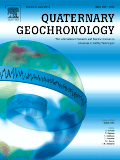
Quaternary Geochronology
Decoding the Past: The Science of Quaternary Dating.Quaternary Geochronology is a leading journal published by Elsevier Ltd, specializing in the field of Earth and Planetary Sciences. With a strong emphasis on the geochronological methods and techniques used to date geological materials from the Quaternary period, this prestigious journal serves as a critical platform for disseminating significant research findings, theoretical advancements, and comprehensive reviews relevant to the stratigraphic and geological sciences. Since its inception in 2006, the journal has garnered an impressive impact factor, positioning itself in the Q1 category for its excellence in Earth and Planetary Sciences, Geology, and Stratigraphy. Quaternary Geochronology currently ranks #11 out of 55 in Stratigraphy, #74 out of 321 in Geology, and maintains a high standing across various related fields. Researchers, professionals, and students are encouraged to explore its rich archives and current issues for the latest trends, methodologies, and findings that shape our understanding of Quaternary environments. The journal does not operate under an open-access model, ensuring that high-quality peer-reviewed research is accessible while maintaining rigorous academic standards.

QUATERNAIRE
Connecting Geoscientists Through Groundbreaking Research.QUATERNAIRE is a reputable journal managed by the Société Géologique de France, specializing in the realms of Earth-Surface Processes and Geology. This esteemed publication has been a vital platform for scientific discourse since its inception, presenting compelling research and insights from both fields. With a significant impact in the academic community, it currently holds a Q3 quartile ranking in the 2023 Scopus categories, demonstrating its importance in disseminating knowledge related to geological phenomena. Although QUATERNAIRE does not have an open access model, it ensures that critical research is accessible to a wide audience, enhancing collaboration among geoscientists and environmental researchers. Based in France at 77, Rue Claude-Bernard, Paris F-75005, this journal continues to evolve its publication scope, welcoming contributions that delve into the intricacies of Earth's processes from 1990 to 2024. Researchers, professionals, and students alike will find valuable resources and inspiration within its pages, contributing to a deeper understanding of our planet's past and present.
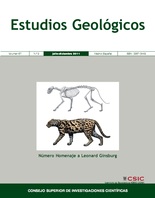
ESTUDIOS GEOLOGICOS-MADRID
Exploring Earth's Mysteries, One Study at a Time.ESTUDIOS GEOLOGICOS-MADRID is a prominent journal in the field of geology, published by the esteemed Consejo Superior de Investigaciones Científicas (CSIC) in Spain. Established in 1976, this Open Access journal has been a vital resource for researchers and professionals since its inception. With an impact factor reflecting its contribution to the Earth and Planetary Sciences community, ESTUDIOS GEOLOGICOS-MADRID currently holds a Q3 category ranking in Geology as of 2023, showcasing its relevance and quality within the discipline. The journal publishes a diverse array of geological studies, ensuring wide-reaching access to significant research findings, thereby promoting collaboration and knowledge sharing. Established as a platform for both foundational research and applied geology, this journal fosters academic growth and contributes to understanding the Earth’s processes. Researchers, professionals, and students are encouraged to explore its extensive archive, which includes publications from 1976 to the present. For more information, visit the journal's editorial office at Editorial CSIC, C/VITRUVIO 8, 28006 MADRID, SPAIN.
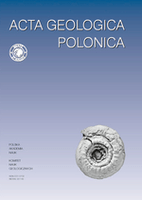
ACTA GEOLOGICA POLONICA
Pioneering discoveries in geology and beyond.ACTA GEOLOGICA POLONICA is a distinguished journal published by the Polska Akademia Nauk, in collaboration with the University of Warsaw's Geology Department. Since its inception, it has served as a vital platform for disseminating innovative research in the field of Geology, reflecting a commitment to advancing scientific knowledge in Earth and planetary sciences. With an ISSN of 0001-5709 and an E-ISSN of 2300-1887, this journal provides a rigorous review process and is classified in the Q3 quartile for Geology as of 2023, indicating its growing influence in the discipline. Despite not being open access, the journal facilitates meaningful contributions that span a range of geological topics from fundamental research to applied sciences, thereby enriching the academic landscape. Researchers, professionals, and students alike are encouraged to engage with the valuable findings and discussions contained within its pages, which continue to shape the future of geological inquiry.
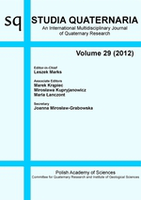
Studia Quaternaria
Exploring the forefront of geological research and innovation.Studia Quaternaria is a leading academic journal published by the Polish Academy of Sciences, Institute of Geological Sciences, specializing in the dynamic fields of Earth-Surface Processes and Geology. With an ISSN of 1641-5558 and an E-ISSN of 2300-0384, this journal has been a prominent platform for scholarly discourse since its inception in 2000. Operating under the open-access model, it aims to disseminate high-quality research that is accessible to a global audience. Studia Quaternaria holds a Q3 ranking in both relevant quartiles as of 2023, indicating its commitment to advancing knowledge in its disciplines despite centering in competitive academic environments. With its publications indexed in Scopus, the journal remains a valuable resource for researchers, professionals, and students looking to stay abreast of innovations and discoveries in Earth-Surface Processes and Geology. Encompassing a broad scope of studies, the journal represents an essential contribution to the geological sciences, fostering a deeper understanding of our planet's changes and processes.